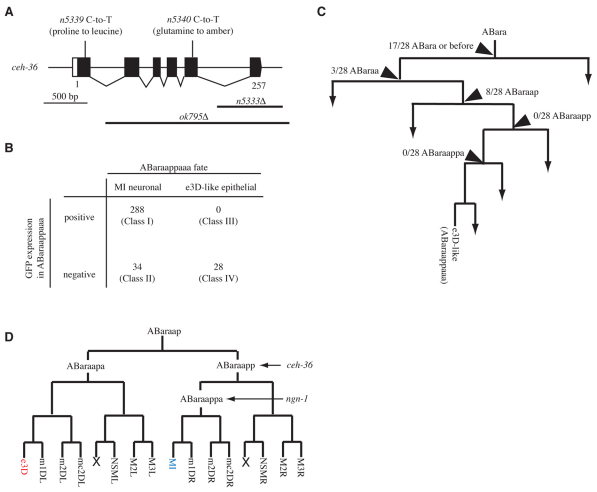Fig. 5.
ceh-36 acts cell-autonomously to establish a bilateral asymmetry. (A) Gene structure of ceh-36 and mutations associated with each mutant are shown. The black boxes indicate exons; white boxes indicate untranslated regions. (B) Mosaic analysis of ceh-36. Mosaic animals were grouped into four classes based on cell fates and the presence of the extrachromosomal array in ABaraappaaa (see text). The number of mosaic animals in each class is indicated. (C) Determination of the site of the extrachromosomal array loss in each of the 28 Class IV animals. A region of the cell lineage showing the origin of ABaraappaaa is shown. The numbers represent the fraction of the Class IV animals in which the extrachromosomal array was lost at the corresponding cell division. (D) Cell lineage diagram indicates the sites of actions of ceh-36 and ngn-1. The wild-type ceh-36 gene in the MI great grandmother cell (ABaraapp) is necessary and sufficient to rescue the MI transformation of ceh-36(n5333) mutants. The wild-type ngn-1 gene in the MI grandmother cell (ABaraappa) is necessary and sufficient to rescue the MI transformation of ngn-1(n1921) mutants.

